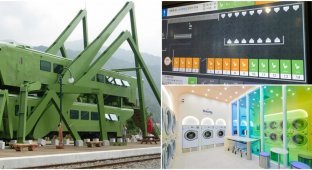How the poorest people live in South Korea (16 photos)
These are tiny apartments whose total area does not exceed 5 square meters. meters. 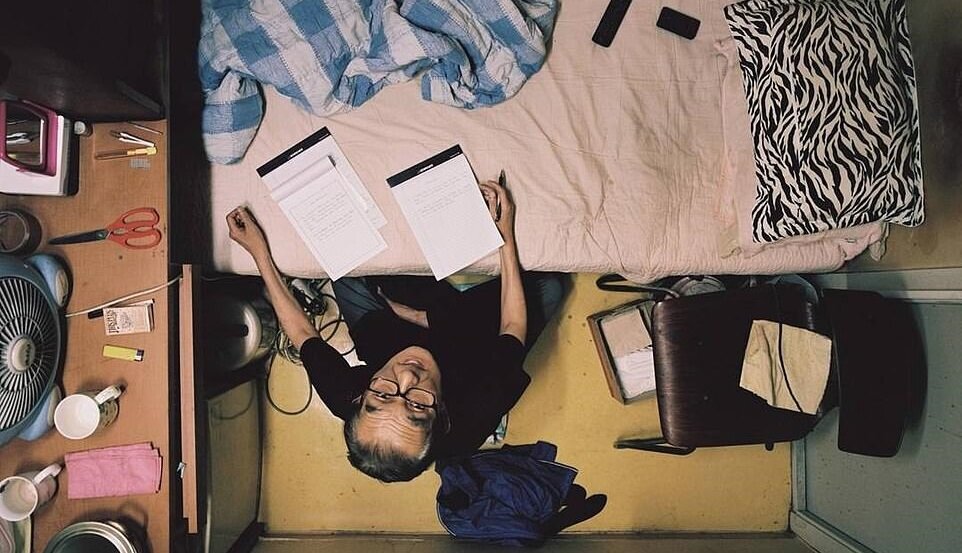
Goshiwon. Photographer Sim Kyu-dong
Today I would like to talk about this phenomenon in a little more detail, because I can’t wrap my head around how you can lead a full life in a room that looks more like a shoebox?! 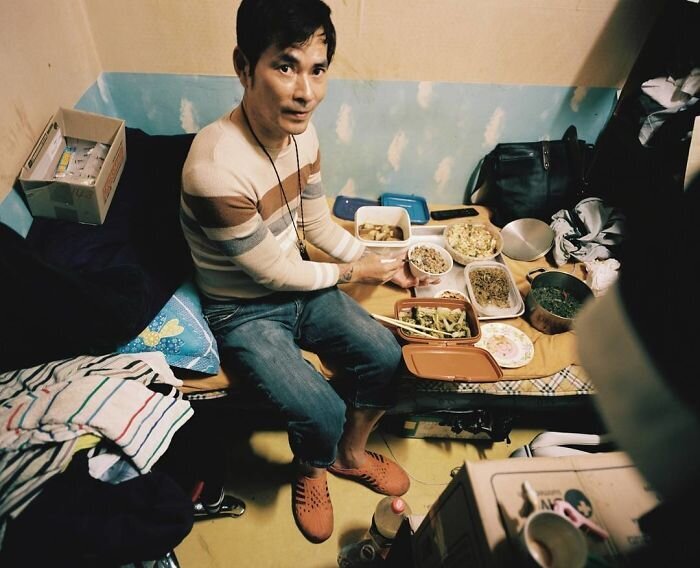
Goshiwon. Photographer Sim Kyu-dong 
Goshiwon. Photographer Sim Kyu-dong
However, goshiwon or goshiwon in South Korea are considered almost the most popular type of budget housing, mostly inhabited by migrants, workers with very low incomes and ordinary students. 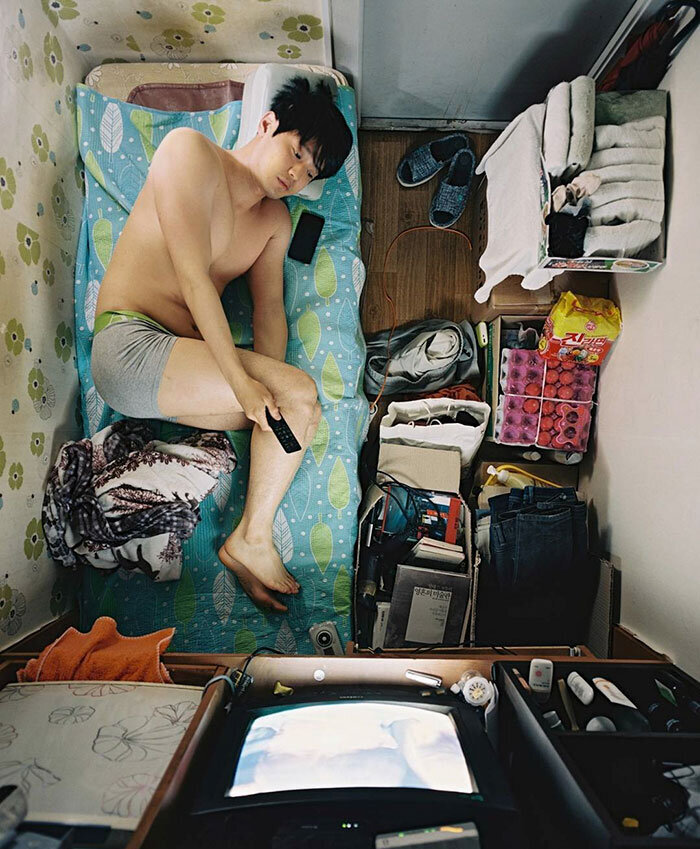
Goshiwon. Photographer Sim Kyu-dong
The very concept of “Goshiwon” comes from two words: Goshi (고시) - “exam” and won (원) “place” or “house”. The history of the appearance of thimble-sized apartments in South Korea is directly related to the harsh everyday life of students and goes back to the 70s of the last century. 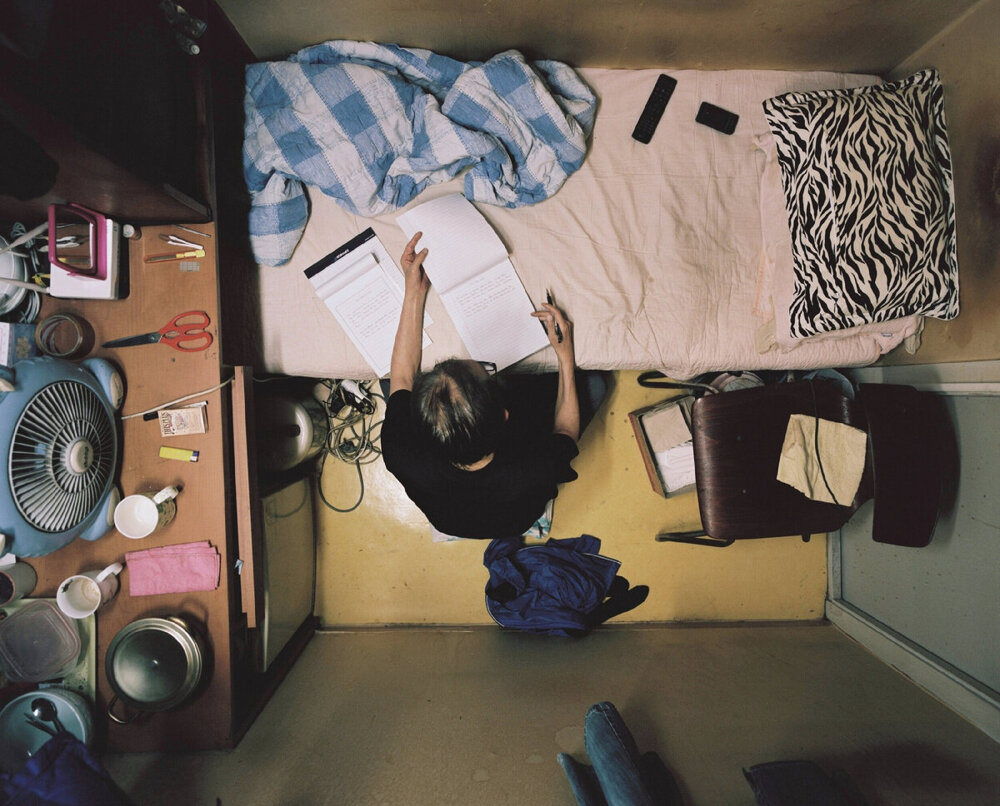
Goshiwon. Photographer Sim Kyu-dong
It was then that cheap rooms first appeared in large South Korean cities, equipped only with a small bed and a work desk - in fact, the minimum that students needed to prepare for important exams. 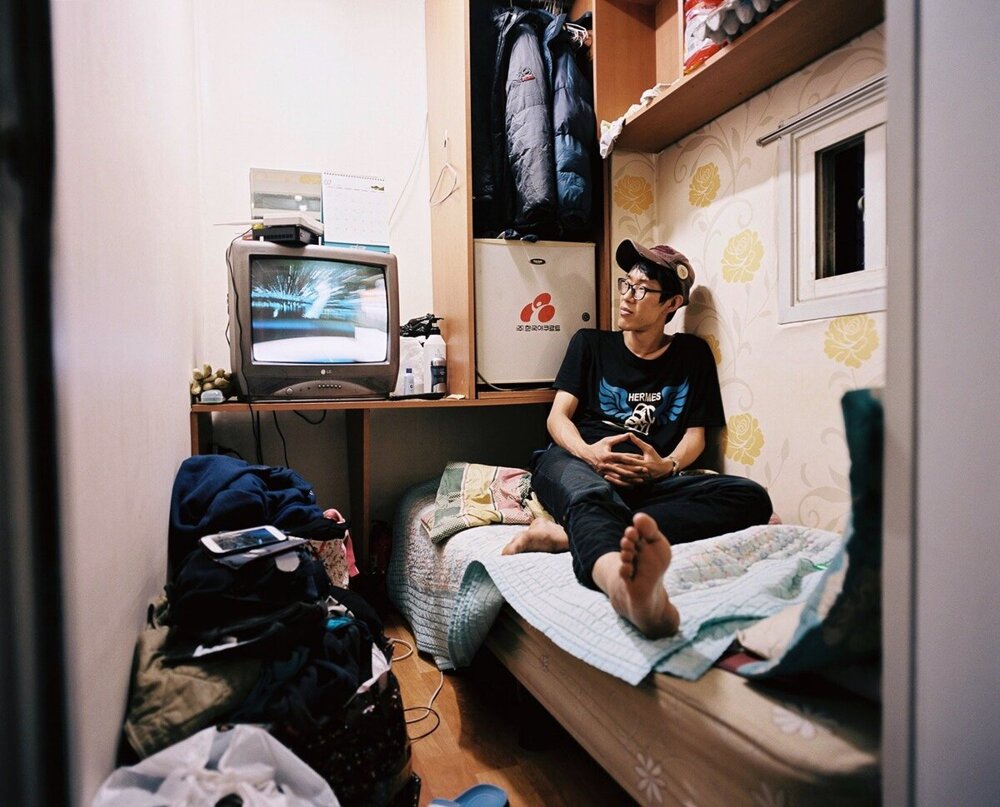
Goshiwon. Photographer Sim Kyu-dong
In order to qualify for a position as a high-ranking government official or get a job as a diplomat in the future, many Korean students are forced to begin preparing for the most difficult entrance exams in advance: usually 2-3 years before entering university. 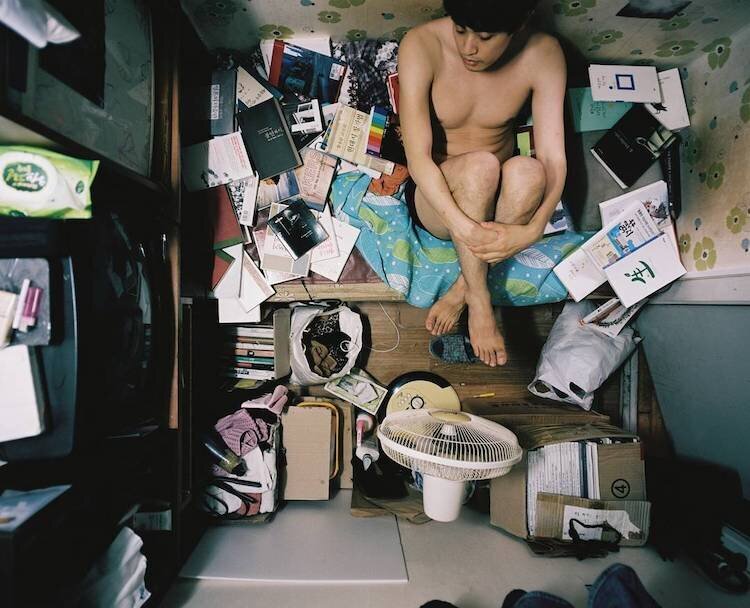
Goshiwon. Photographer Sim Kyu-dong
Well, so that no extraneous matters would distract them from their studies, there should be nothing unnecessary in the room. Future students were required to do only their studies, interrupting only for food and sleep. Over time, goshiwons ceased to be considered exclusively student housing, and small rooms increasingly began to be rented by working people (both locals and visitors), whose budget did not allow them to rent a full-fledged apartment. 
Goshiwon. Photographer Sim Kyu-dong
As a rule, goshiwons are located exclusively in large cities, since this is where people go in search of a better life and more attractive job offers. And, for obvious reasons, most of them are in Seoul, the capital of South Korea. The cost of renting the most affordable goshiwon in the capital is 200,000–250,000 won per month, which, of course, is much cheaper than renting even the simplest one-room apartment in Seoul. 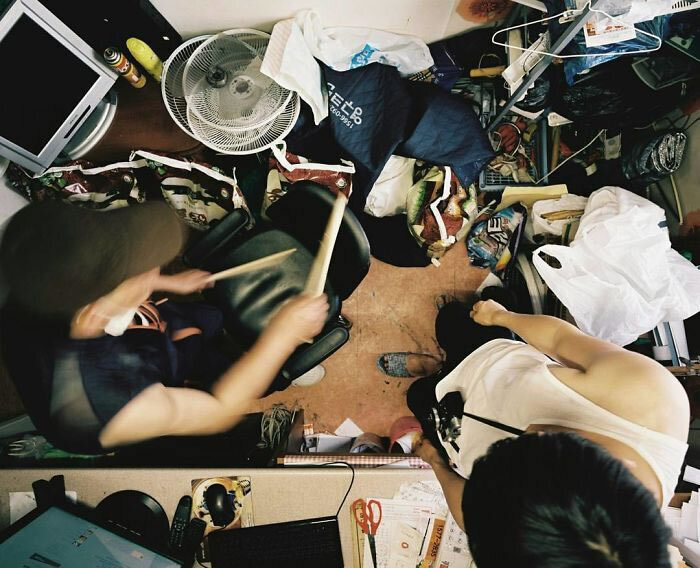
Goshiwon. Photographer Sim Kyu-dong
Most often, such a goshiwon has a bed, a desk and a wardrobe, but all other “conveniences” in the form of a shower and toilet are shared with other residents. And, believe me, there are a lot of them - more than 20 people on the floor. The most budget goshiwon has no windows and no kitchen, but in Seoul you can find an option with your own kitchen or at least something similar to a kitchen, but the cost of renting such a room will be much higher. 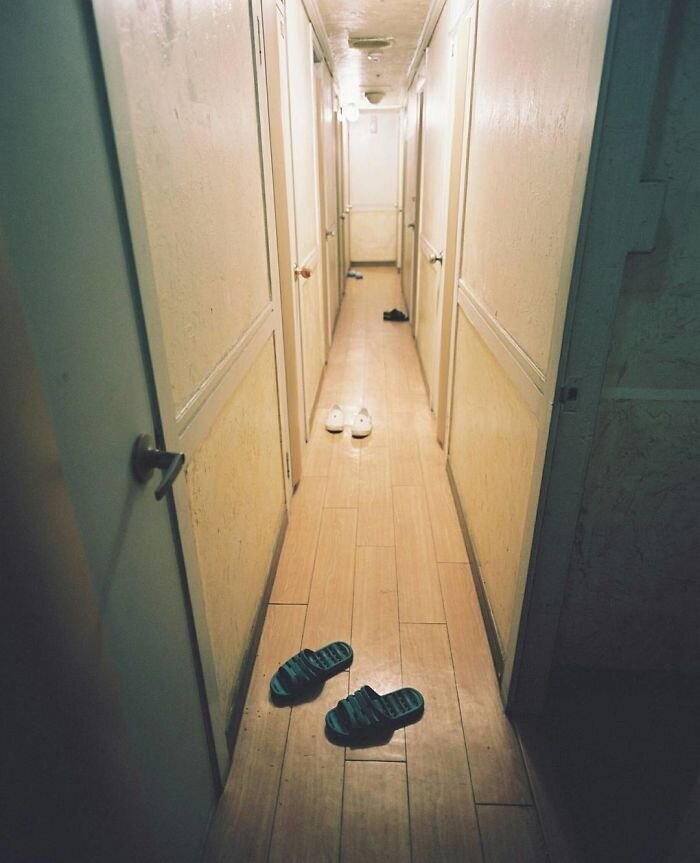
Goshiwon. Photographer Sim Kyu-dong
In some goshiwons, the function of an improvised free space is performed by the roof, on which residents can, for example, relax, breathe fresh air, have a snack with a view of the city, or hang clothes to dry after washing.
Goshiwon. Photographer Sim Kyu-dong
Renters often use the roof as a place to store additional items, such as pillows and blankets. However, due to improper storage conditions, things quickly wear out, deteriorate and simply become unusable. But there is nothing to do - the inhabitants of Goshiwon have no other storage facility. 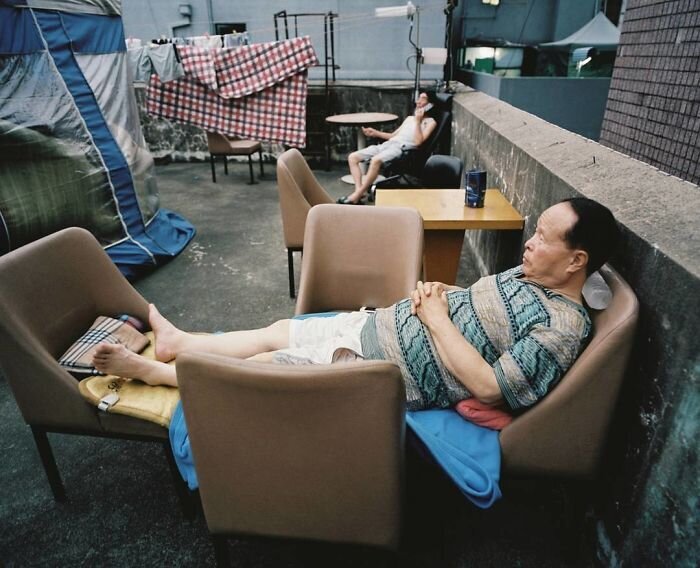
Goshiwon. Photographer Sim Kyu-dong
By comparison, renting the smallest one-room apartment costs Korean citizens about 24 million won for a two-year “jeonse” contract, which is a large deposit paid at the beginning of the lease instead of monthly rent. 
Goshiwon. Photographer Sim Kyu-dong
This is a lot of money, which is unlikely to be found among adult working citizens of South Korea, not to mention students or visiting migrants. Therefore, goshiwons represent the only affordable housing option for people with very modest incomes. 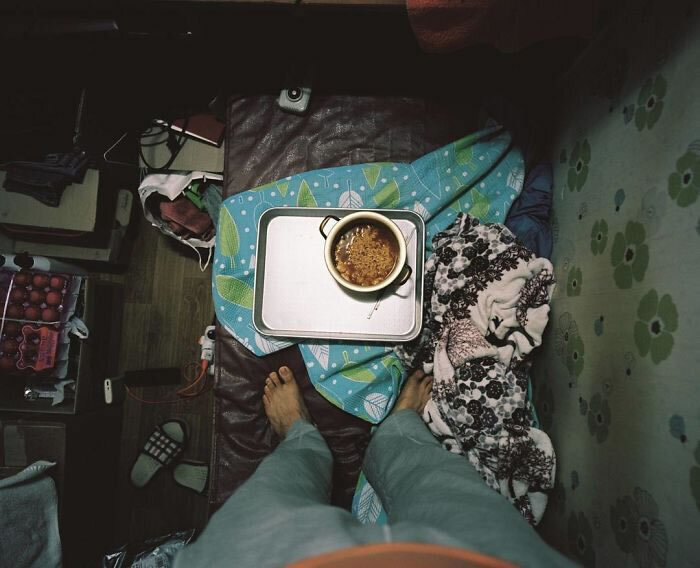
Goshiwon. Photographer Sim Kyu-dong
Despite the fact that we are accustomed to considering South Korea a highly developed, progressive and, most importantly, prosperous country, the number of goshiwons on its territory is only increasing every year. 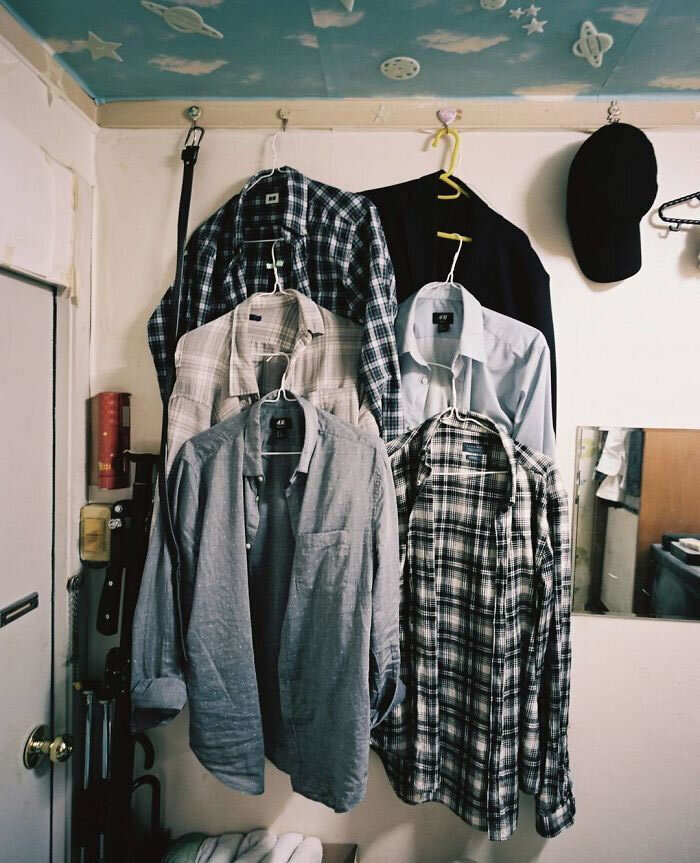
Goshiwon. Photographer Sim Kyu-dong
Thus, according to data published by the South Korean government, in 2020 there were about 8,000 Goshiwon residents in Seoul, and about 4,984 people in Gyeonggi Province. Moreover, goshiwons began to appear in more expensive quarters of the capital, such as Chungdam-dong and Dokok-dong, and with a higher price tag - from 400,000 won to 600,000 won per month. 
Goshiwon. Photographer Sim Kyu-dong













